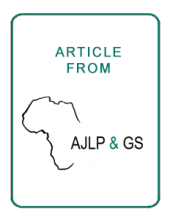/ library resources
Showing items 82 through 90 of 73379.In October 2016 the Liberia Land Authority (LLA|) was legislated as the Nation’s first one-stop-shop for land management and administration. The LLA has the statutory mandate to administer land administration across the nation.
Ten years ago, Kenya made a land policy[1] to secure land rights, promote economic growth, investment and reduction of poverty. This paper seeks to examine how the policy has fared towards improvement of livelihoods, establishment of an accountable and transparent institutional system.
Food insecurity has been a major global development concern. Hence, SDG Two seeks to achieve Zero Hunger by 2030. The situation is severe in sub-Saharan Africa, where customary practices deprive women of land ownership and limit their access rights.
Land administration as one of the mechanisms of availing property rights to owners cannot be achieved unless there are well-functioning and coordinated institutional frameworks.
This paper examines the awareness and information access linkages that could be improved to enhance women access to appropriate conflict resolution mechanisms in rural Tanzania.
There is increasing awareness that innovations foster inclusive land administration and ease of access to land among citizens but studies exploring innovations in government within the context of developing countries are scanty.
Rwanda has undertaken a land registration and titling program since 2008 with a registration of 10.3 million land parcels in 2013.
Land titles registration is germane to providing proof of individual ownership of land. In recognition of its importance in enhancing property rights, efforts at improving land title registration has increased significantly.
The study looks at the implementation of a GIS - Based Property Tax Information Management System to solve the problem of low internally generated revenue.
Paginación
Land Library Search
Through our robust search engine, you can search for any item of the over 64,800 highly curated resources in the Land Library.
If you would like to find an overview of what is possible, feel free to peruse the Search Guide.

